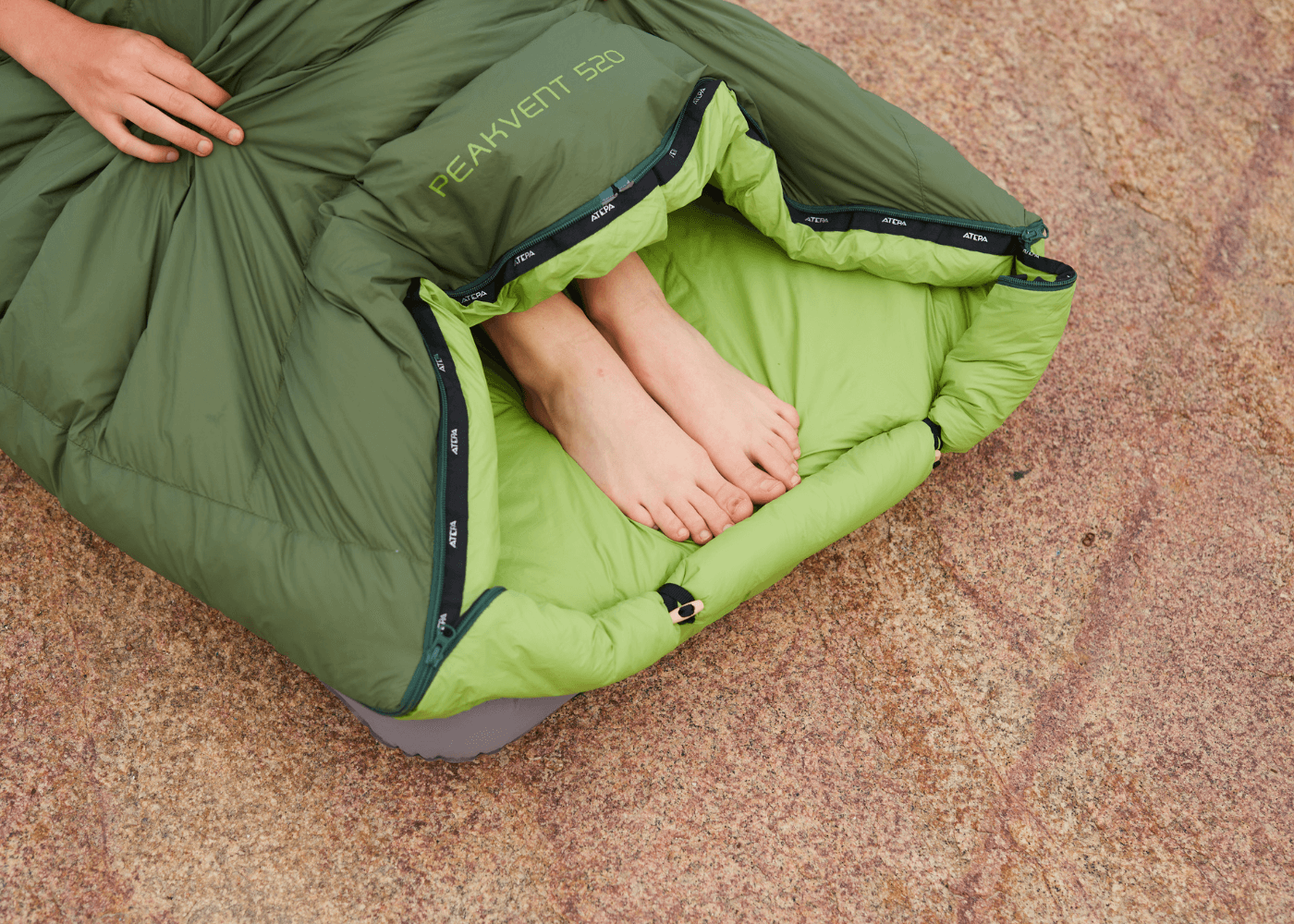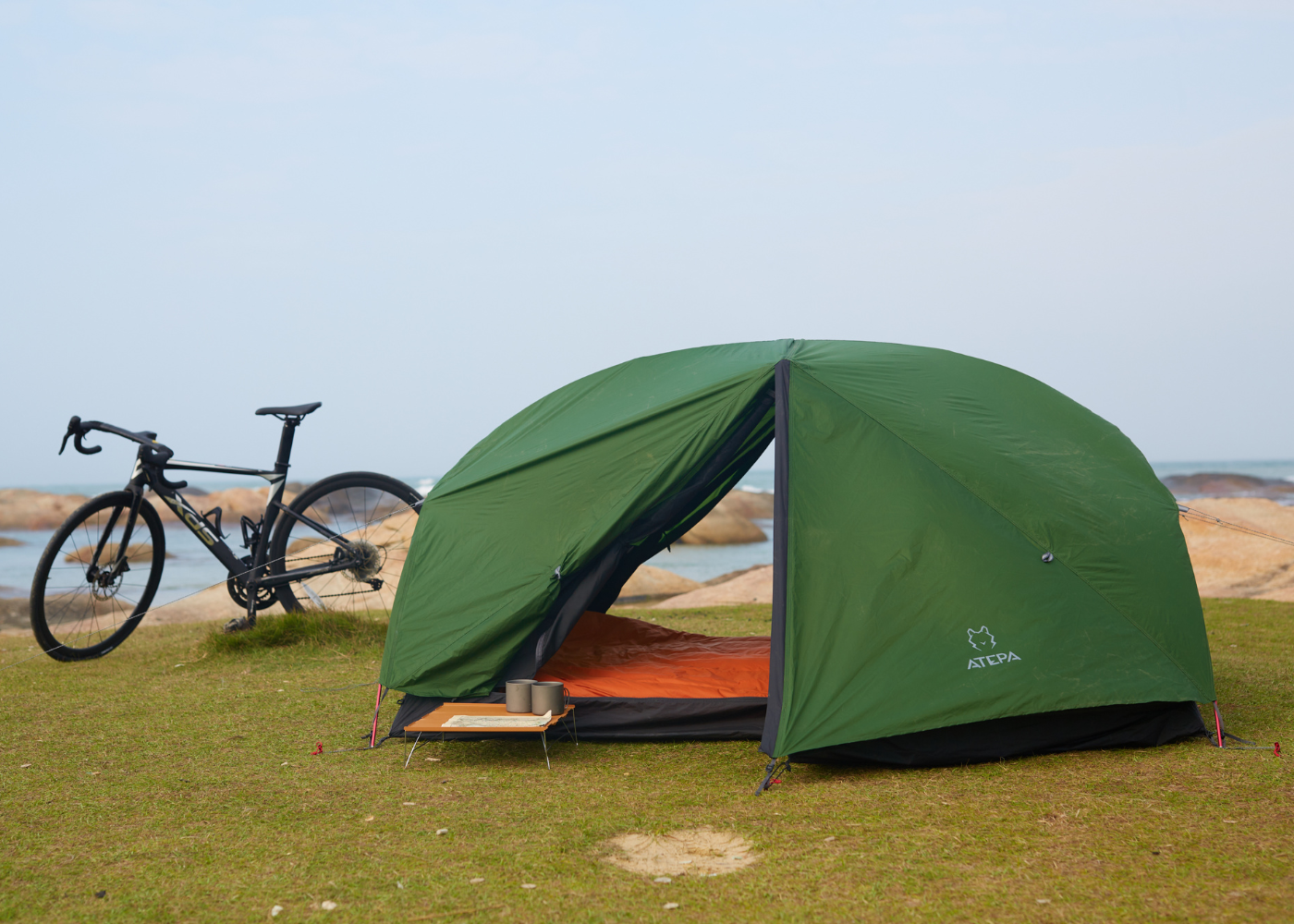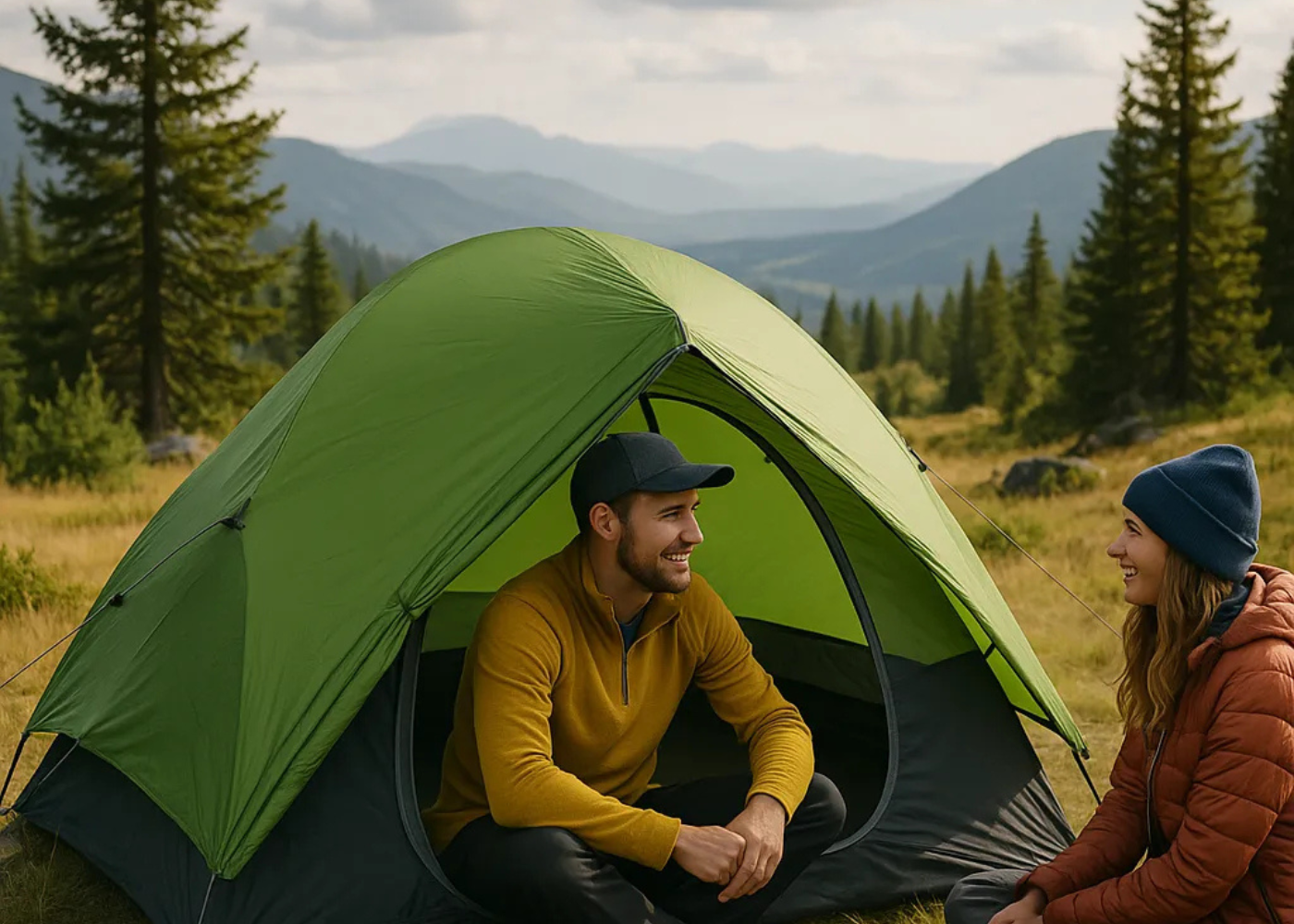Introduction
Camping in the fall and early winter is magical—the crisp air, colorful leaves, and quiet trails create a unique outdoor experience. But the drop in nighttime temperatures also makes choosing the right sleeping bag absolutely essential. Whether you’re planning a short weekend trip or a longer backpacking adventure, the right gear will determine if your nights are cozy or uncomfortably cold.
In this guide, we’ll break down the key factors to consider when choosing a sleeping bag this season, comparing different designs such as a wearable sleeping bag, an ultralight sleeping bag, or a classic down sleeping bag. We’ll also share specific tips on how to stay warm, pack efficiently, and pick the model that suits your adventure style.

1. Why Your Sleeping Bag Choice Matters in Cold Conditions
A sleeping bag is more than just a blanket—it’s your microclimate during the night. Once the temperature drops, your body loses heat rapidly through convection and conduction. A properly insulated lightweight sleeping bag keeps you warm without adding too much bulk to your pack. Conversely, the wrong choice could lead to restless nights or even hypothermia in extreme weather.
That’s why fall and winter campers often prioritize:
-
Insulation material (synthetic vs. down).
-
Shape and fit (envelope, mummy, or wearable).
- Portability (especially for backpackers).

2. Materials and Insulation: Down vs. Synthetic
When people search for the best ultralight sleeping bag, the debate often comes down to insulation type.
-
Down Sleeping Bag:
Down insulation, sourced from duck or goose feathers, is famous for its warmth-to-weight ratio. A down sleeping bag is compressible, lightweight, and perfect for backpackers who want to minimize pack size. The drawback is that down loses much of its insulating power when wet, so it requires extra care in damp conditions. -
Synthetic Insulation:
Synthetic fills retain warmth even when damp and are often more affordable. While they may be slightly bulkier than down options, they offer reliability for wet environments.
For fall camping, down is often preferred because it provides superior warmth during colder nights while still being packable.

3. The Rise of the Wearable Sleeping Bag
Traditional designs are giving way to innovative solutions like the wearable sleeping bag. Unlike the standard mummy or rectangular shape, a wearable design doubles as both clothing and bedding.
Key benefits:
-
Versatility: Use it as a poncho around camp in the evening, then zip up and sleep without changing gear.
-
Mobility: Great for campers who want to stay warm while cooking, reading, or socializing around the fire.
-
Comfort: Less restrictive than mummy bags, allowing free movement.
Our Multifunctional Camping Poncho Wearable Sleeping Bag is an excellent option for adventurers who value multi-use gear. It provides the warmth of a lightweight sleeping bag while offering the flexibility of a cloak.

4. Ultralight Sleeping Bags for Backpackers
If your adventure involves long hikes or multi-day treks, every ounce in your pack matters. This is where the ultralight sleeping bag becomes essential.
Why choose ultralight?
-
Reduced pack weight means more energy for hiking.
-
Compact design frees space for other essentials.
-
Comfort without compromise, as modern ultralight models balance thin materials with high insulation efficiency.
Our 3-in-1 Backpacking Sleeping Bag combines the benefits of a down sleeping bag with ultralight performance, giving hikers the ability to adjust warmth levels depending on the season.

5. Choosing the Right Sleeping Bag for the Season
When selecting a bag, consider the following:
-
Temperature Rating: Always pick a sleeping bag rated lower than the coldest expected nighttime temperature. For fall camping, a 20–30°F (-6 to -1°C) rating is often a safe choice.
-
Weight vs. Warmth: Balance the need for warmth with portability. Backpackers lean toward ultralight, while car campers may prefer bulkier but warmer options.
-
Bag Shape:
-
Mummy bags are the warmest due to reduced dead space.
-
Rectangular bags allow more room but can feel colder.
-
Wearable sleeping bags strike a balance between comfort and warmth with added mobility.
-
6. Practical Tips for Staying Warm
Even the best lightweight sleeping bag can underperform if used incorrectly. Here are tips for maximizing warmth:
-
Always use an insulating sleeping pad beneath your bag.
-
Wear dry base layers to bed—avoid sweaty clothing.
-
Ventilate your tent to reduce condensation that can dampen insulation.
-
Eat a warm meal before bed to boost body heat.

Conclusion
Choosing the right sleeping bag for fall and cold-weather camping is a balance of warmth, weight, and versatility. For adventurers who prioritize mobility and versatility, the wearable sleeping bag is a game-changer. For those trekking long distances, an ultralight sleeping bag—especially one with down insulation—offers unmatched performance.
No matter which you choose, remember: your sleeping bag isn’t just gear, it’s your nighttime refuge in the outdoors. Invest in the right one, and you’ll sleep soundly under the stars—no matter how cold it gets.




Leave a comment
All comments are moderated before being published.
This site is protected by hCaptcha and the hCaptcha Privacy Policy and Terms of Service apply.